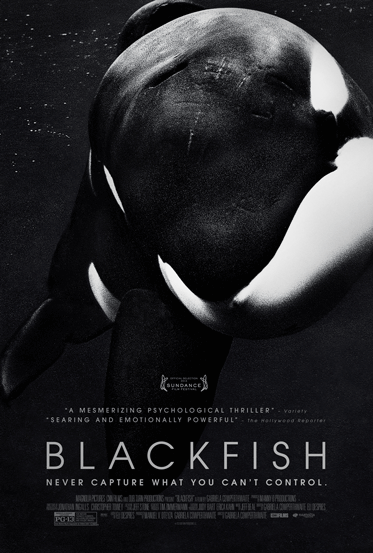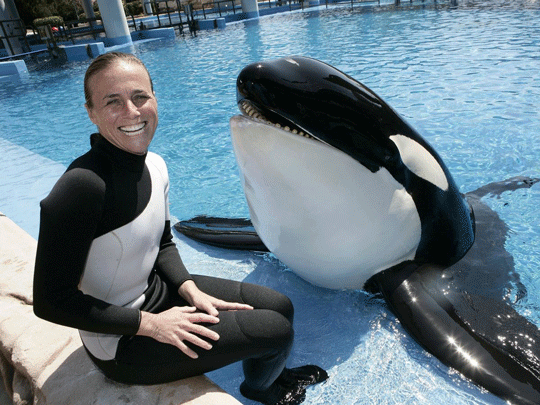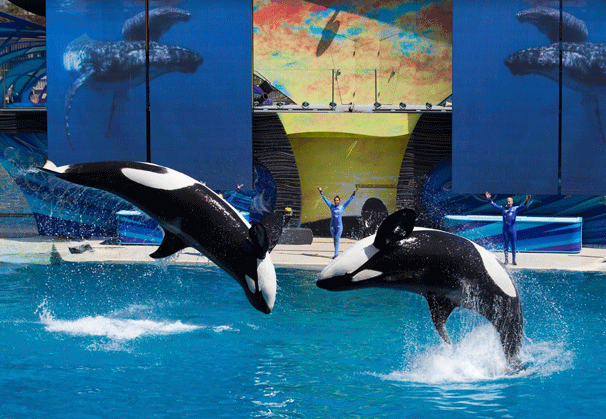Though many of us have grown to love going to marine theme parks as a child, we may have yet to realize how much animal abuse goes on behind the scenes with sea creatures tortured and separated from their family. The American documentary created in 2013 and directed by Gabriela Cowperthwaite, Blackfish, discusses the moral controversy of keeping orcas, known as killer whales, in captivity when it results in risks for the animals’ wellbeing and humans’ safety.

This critically acclaimed documentary follows an orca, Tilikum, on his journey of being held hostage at SeaWorld. Being ripped from the pod of his family and home, he was taken into captivity for nearly twenty years at the theme park which caused him to suffer emotionally and physically. This led him to kill three humans; two trainers and a trespassing spectator. In the “Dine with Shamu” show in 2010, Tillikum left SeaWorld trainer, Dawn Brancheau with “multiple traumatic injuries and drown[ed]” her, leaving everyone speechless. A neuroscientist, Lori Marino explains how “all whales in captivity have a bad life. They’re all emotionally destroyed. They’re all psychologically traumatized”.

Through countless “shocking footages, expert testimonies and heartbreaking interviews” shown throughout this documentary, it allows the audience to empathize with these heartbreaking stories and bring them closer to the dark secrets that are often unheard of at many of these well-known parks. This informative documentary broadcasts the idea of bringing awareness to the hardships numerous of these marine animals face and to stop the torment occurring at many of these parks, relating to the United Nations Sustainable Development Goal of Life Below Water and Life on Land.
Over the past fifty years, SeaWorld has been one of the leading theme parks in North America, most famously known for marine life showcasing sea lions, dolphins, sea turtles, sharks, manatees, and killer whales. Many features and up-close animal experiences have led multiple families to bring their little ones to enjoy these shows of a lifetime.

Since the release of this film, however, SeaWorld’s profit has decreased by around 84%. After Jim Atchison resigned from being the chief executive officer of SeaWorld, Joel Manby took over his position and made significant changes to the theme park. Through endless requests from fans and the Orca Protection Act in 2016, SeaWorld became the first to remove all live shows where they began showcasing more educational shows, such as Orca Encounter, rather than those for simply entertainment, like One Ocean.
In hopes of protecting the oceanic wildlife, SeaWorld has rescued over thirty-eight thousand creatures.

Looking over his experiences at SeaWorld, a former trainer, named Jeffery Ventre, discusses the environment the orcas were left in while in captivity. He tells people to “imagine being in a small concrete enclosure for your life when you’re used to swimming 100 miles a day”. After considering the compact spaces the orcas were living in, The Blue World Project was created to upgrade and remodel the entire pools and replicated the wildlife by utilizing scenery and rocks.
This documentary gives the audience an opportunity to think twice about what they see as not everything shown to them is perfect as it seems. It is critical to bring more awareness to animal trafficking as many species such as killer whales are going endangered.
To learn more about Blackfish, click here.
